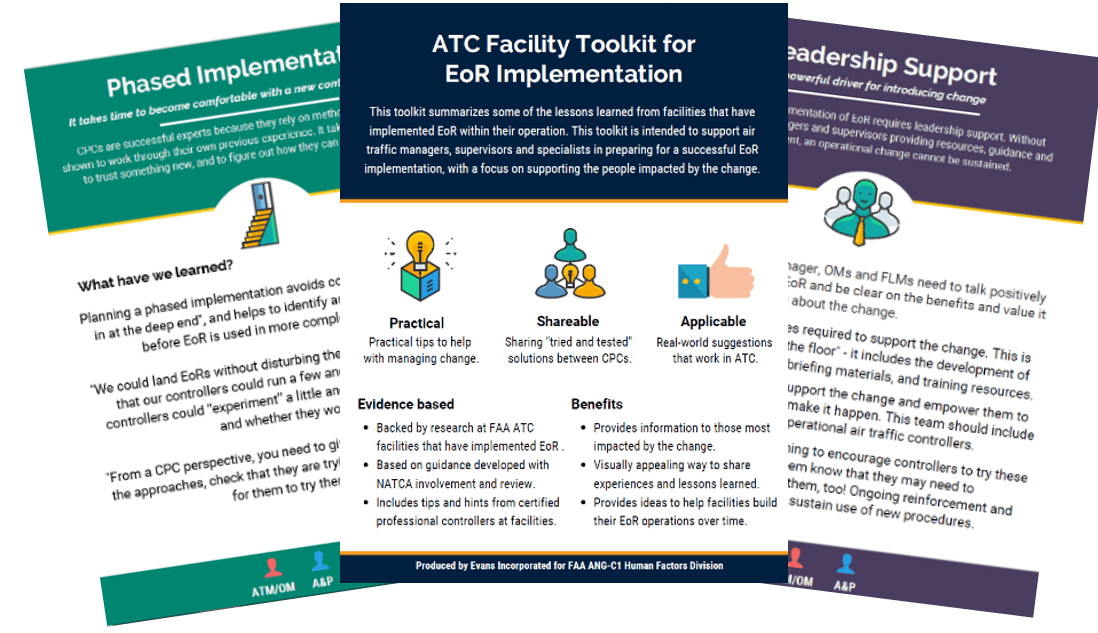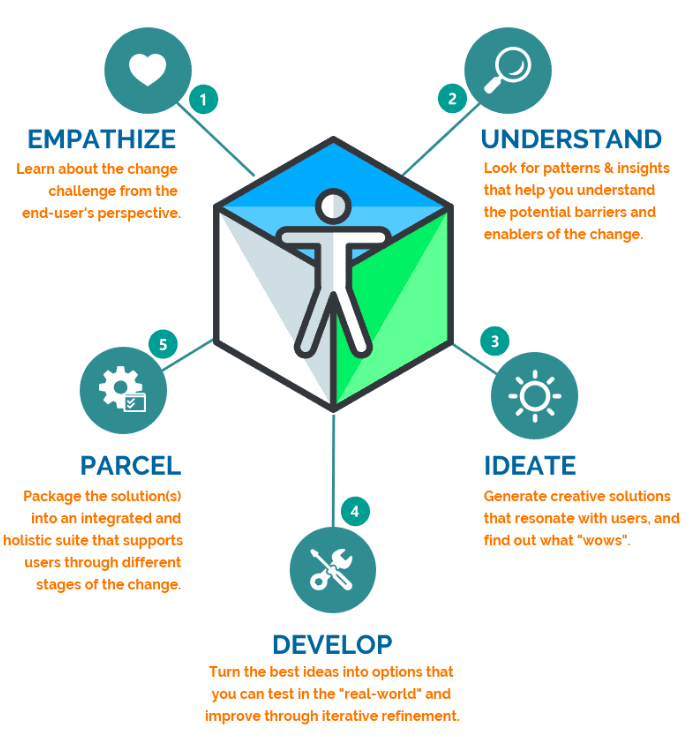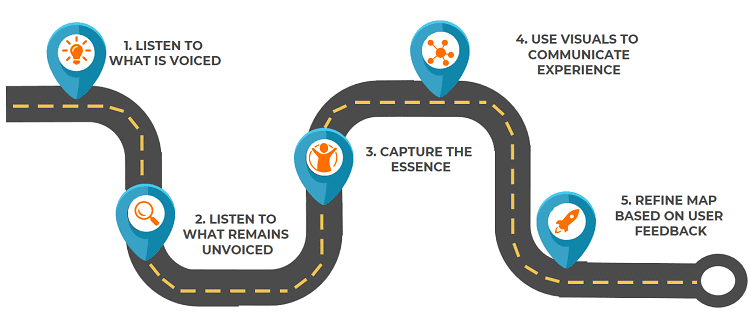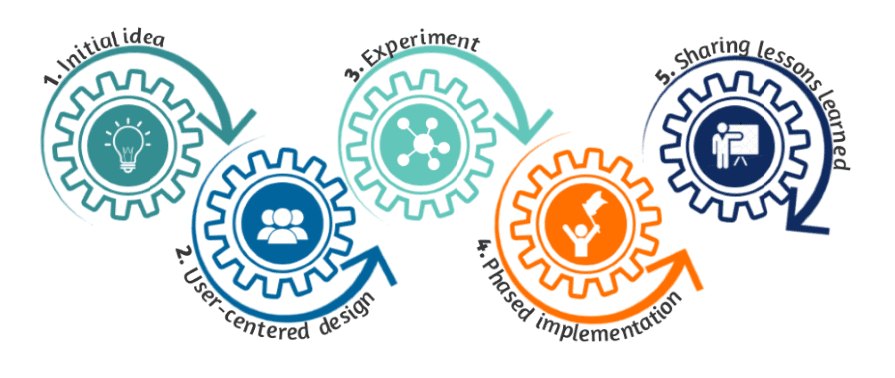Human-Centered Change Management


The Challenge
A Federal agency responsible for aviation safety embarked on a mission to modernize the national airspace system. By leveraging a suite of automated technologies and advanced procedures, the agency had the opportunity to deliver increased airspace capacity and fuel efficiency. In addition to the benefits to the environment, the technology supported air traffic controllers in managing their workload. The existing workforce was trained to control aircraft in a very tactical and “hands-on” manner. The introduction of these new technologies and procedures fundamentally changed the work that air traffic controllers love to do. To maximize the benefits of the automation, the agency needed to understand the air traffic controller perspective in implementing these new technologies and procedures.

Design Thinking in Change Management
Evans knows the creation of a technical solution alone does not lead to meaningful change. In other words, innovation is not effective simply because it is a good idea – the advantages of innovation emerge when the idea is used. The Evans team brought together consultants with expertise in human factors, organizational development, and communications to better understand how air traffic controllers would interact with the automation and associated procedures. The team used a design thinking (LT) approach to place air traffic controllers at the heart of the change management process, making the end user perspective the focus of the work. This helped to identify some critical nuances that would not have been identified with more traditional approaches to “change management.”


The Human-Centered Solution
Evans engaged key stakeholders through one-on-one interviews, on-site observations, and natural “experiments” to understand the user perspective. Analysis included usability methods and design thinking techniques, such as journey mapping (LT) and thematic analysis. In addition to looking at what didn’t work, the team focused on appreciative inquiry- asking “what wows?” and “what works?” This allowed the Evans team to paint a rich picture of user needs and requirements at different stages of the change. This human-centered approach identified the key success factors required to support air traffic controllers with the changes that arise when new technologies and procedures are introduced.



Meaningful Results
By tapping into the end-user’s personal experiences and perceptions, we were able to form actionable recommendations to help the agency communicate the impacts and challenges of the change to different management and stakeholder groups. We were also able to capture innovations and “lessons learned” that create value (LT) to the roll-out at other air traffic control facilities. We developed a suite of visual tools (AS) to help the agency implement automated technologies and advanced procedures in a human centered manner. As one user said: “this really captures MY truth – and that’s exactly what is needed to make this happen.” These outcomes were possible because we took a design thinking approach to managing the change. This is one example of how Evans teams work creatively to deliver “Human-Centered Change That Works.”





